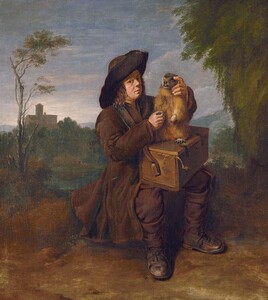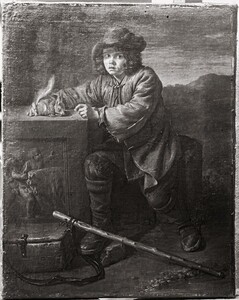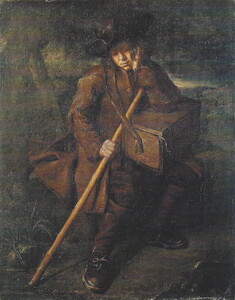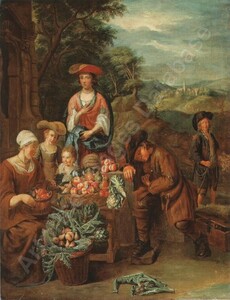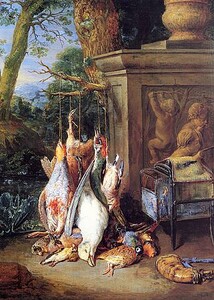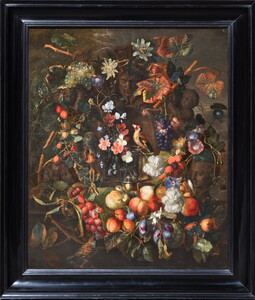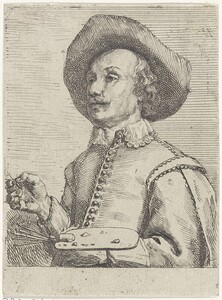1.500 €
A young Savoyard with a box holding his pet animal, most probably a marmot
Oil on canvas : 53,5 X 34,0 cm
Unsigned
Frame : 69,3 X 49,1 cm
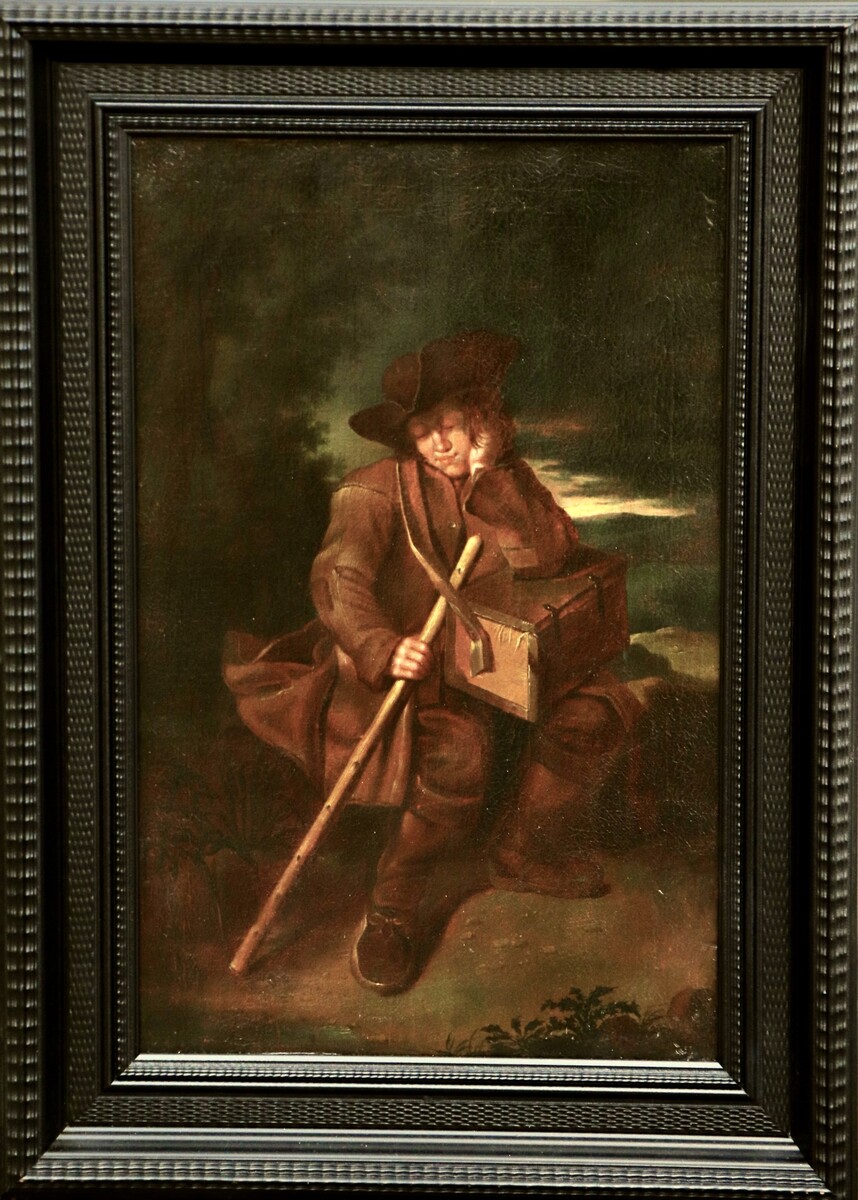
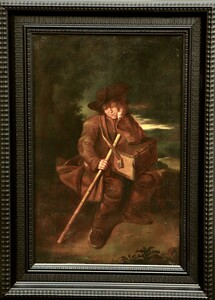
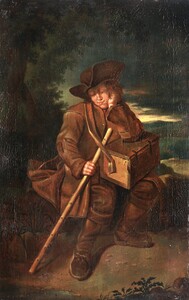
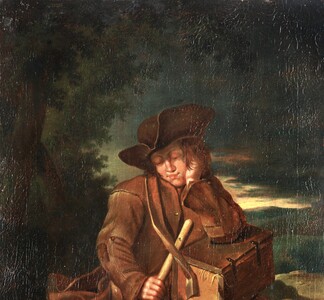
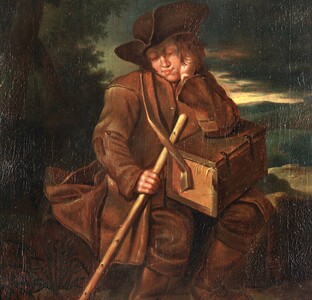
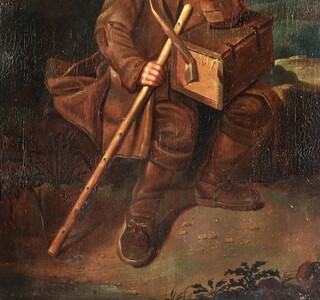
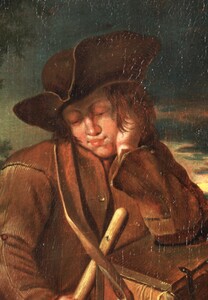
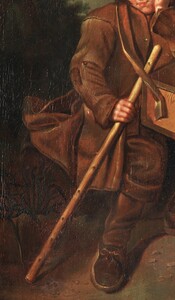
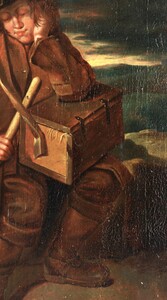
In short
Peeter Snyers is an interesting painter who remained active in Antwerp during all his career. He is best known as an excellent and daring still life painter. He also painted an important series of market scenes representing the Twelve Months.
The Alpine region of the Savoy was so poor in those days that families would let their children work as chimney sweepers in France and beyond in Flanders. They made some extra money with their dancing pet marmots. Snyers painted several of these young, poor lads.
About Peeter Snyers
Also called Peter or Petrus Snijers.
Flemish painter
Antwerp 1681 – 1752 Antwerp
Painter of still lifes, landscapes, genre scenes and portraits.
Nicknamed “the Saint” (“de heilige Snijers”), due to his piety.
Pupil in Antwerp of the genre scene painter Alexander van Bredael (1663 – 1720) in the year 1694/95: Snyers was then aged 13/14.
Master in the Painter’s Guild of Saint Luke in Brussels in 1705, in Antwerp in 1707. Snyers remained active in his birthplace until his death.
He is said to have travelled before 1726 to England, where he painted portraits. In 1726 he married Maria Catherina van der Boven.
Peeter Snyers was born in a well-to-do merchant family.
From 1641 onwards he was a teacher at the Academy of Antwerp.
He spent his later years painting and producing engravings both after his own work and that of other Old Masters.
Snyers’ nephew, Petrus Johannes Snyers (1696 – 1757) was one of his pupils. As our painter and his wife did not have any children he received the considerable heritage of his uncle.
Christiaan Kramm (1797 – 1857) mentions in his “Lifes and works of the Dutch and Flemish painters, sculptors, engravers and architects” (published in Dutch in 1857, P. 1539) that Peeter Snyers’ art collection, 75 paintings, mostly Flemish, was sold at auction in Antwerp shortly after his death, August 22nd 1752.
But he also mentions a second, much more important auction in Antwerp, this time of the estate of Petrus Johannes Snyers, May 23rd 1758 (and not on August 22nd and 23rd of August 1763, as the RKD mentions) of 160 paintings, among these 16 by Rubens, 9 by van Dyck and works by Raphael, Locatelli, Rosa, Rembrandt, Cuyp, Wouwerman and Jan Brueghel I.
Petrus Johannes Snyers had inherited from both his father, who was a jeweller, and from his uncle, our painter. That second auction must most probably also have held (the better) part of Peeter’s collection.
Peeter’s best-known paintings, which he actually painted for his own collection, form a series of twelve months: market vendors with season’s products or young women with flowers, plus the astrological sign of each month. These paintings were also dispersed in 1763. Two are in the Fine Arts Museum of Antwerp, two in the Fine Arts Museum of Brussels. A few years ago I have also sold one, probably the month of September.
About our young Savoyard and his pet marmot
Savoy is a region on the western flank of the Alps. The traditional Duchy of Savoy is part of France. Chambery is its traditional capital, but following the annexation of neighbouring territories in Piedmont, in North-western Italy, during the 16th century, Turin became the new capital.
Savoy was a poor region, and at least from the early 18th century on, the Savoyards would send their children all over France, and over neighbouring parts of Europe, as chimney-sweepers (seeing the fact that they were small and thin). They could only exercise this activity during summer.
To make some extra money these children, both boys and girls, would take along their pet, usually a dancing marmot (sometimes a squirrel). Our boy is holding a box in which he keeps his marmot. One of these Savoyards plays a small role in “Les Misérables” of Victor Hugo, written in 1862.
Snyers painted several times such a young Savoyards with their pet marmots. The Suermondt-Ludwig Museum in Aachen holds an identical, but smaller composition of our boy.
Why should you buy this painting?
Because it testifies of a little-known chronicle of European history and economic migration.
Comparative paintings
Click photos for more details

